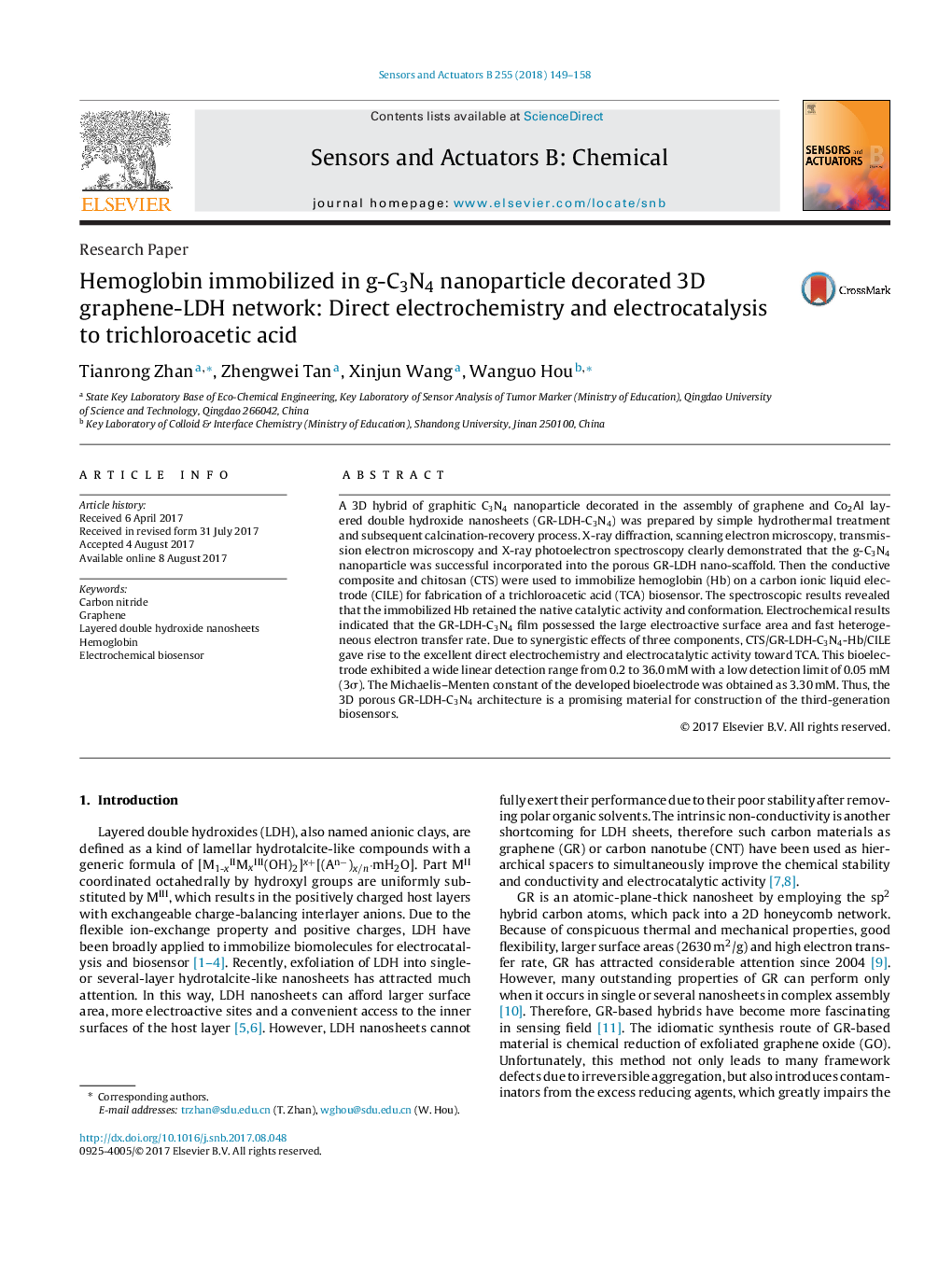| Article ID | Journal | Published Year | Pages | File Type |
|---|---|---|---|---|
| 5008602 | Sensors and Actuators B: Chemical | 2018 | 10 Pages |
Abstract
A 3D hybrid of graphitic C3N4 nanoparticle decorated in the assembly of graphene and Co2Al layered double hydroxide nanosheets (GR-LDH-C3N4) was prepared by simple hydrothermal treatment and subsequent calcination-recovery process. X-ray diffraction, scanning electron microscopy, transmission electron microscopy and X-ray photoelectron spectroscopy clearly demonstrated that the g-C3N4 nanoparticle was successful incorporated into the porous GR-LDH nano-scaffold. Then the conductive composite and chitosan (CTS) were used to immobilize hemoglobin (Hb) on a carbon ionic liquid electrode (CILE) for fabrication of a trichloroacetic acid (TCA) biosensor. The spectroscopic results revealed that the immobilized Hb retained the native catalytic activity and conformation. Electrochemical results indicated that the GR-LDH-C3N4 film possessed the large electroactive surface area and fast heterogeneous electron transfer rate. Due to synergistic effects of three components, CTS/GR-LDH-C3N4-Hb/CILE gave rise to the excellent direct electrochemistry and electrocatalytic activity toward TCA. This bioelectrode exhibited a wide linear detection range from 0.2 to 36.0Â mM with a low detection limit of 0.05Â mM (3Ï). The Michaelis-Menten constant of the developed bioelectrode was obtained as 3.30Â mM. Thus, the 3D porous GR-LDH-C3N4 architecture is a promising material for construction of the third-generation biosensors.
Related Topics
Physical Sciences and Engineering
Chemistry
Analytical Chemistry
Authors
Tianrong Zhan, Zhengwei Tan, Xinjun Wang, Wanguo Hou,
